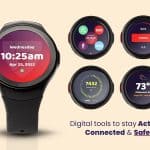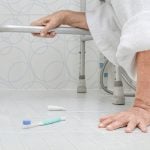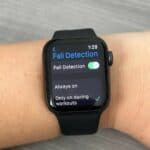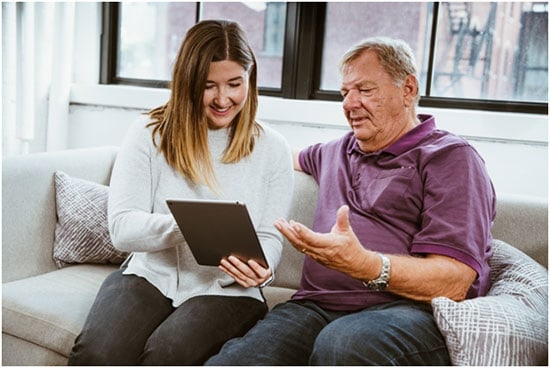
The field of senior caregiving, like many other fields, is becoming increasingly high-tech. In 2015, startup companies that deal with the health of individuals over the age of 50 received $1.3 billion in funding, and at that point the year was only half over. During a discussion at the 2014 National Alliance for Caregiving, experts stated that we have just barely scratched the surface of what might be possible in the field of technologies designed to assist family caregivers.
San Francisco geriatrician Leslie Kernisan, who also blogs about tech, warns that while new technology can make life a bit less stressful for caregivers, many new products work better on paper than they do in real life. She suggests that you look for products that can be refunded if they don’t work for you, or that you ask around for more information from people who have tried it before you make the leap and purchase something. Read our Medical Guardian reviews to learn about pricing and return policies.
Not all of the technology that can be used to assist caregivers is new or specially-designed, though. For example, many people already use door chimes to keep track of wandering Alzheimer’s sufferers. However, there are a handful of new products that have been designed specifically for senior care, such as:
Luna Lights
For elderly individuals, a fall can often lead to a trip to the hospital, and sometimes an extended stay. These falls frequently happen at night, when dim lighting combines with deteriorating vision to create a hazard. Luna Lights is a system that consists of a pressure pad next to the bed, and a set of lights that lead the way to the bathroom. The lights turn on when the individual wakes up and steps on the pressure pad, and they turn off when the individual gets back into his or her bed.
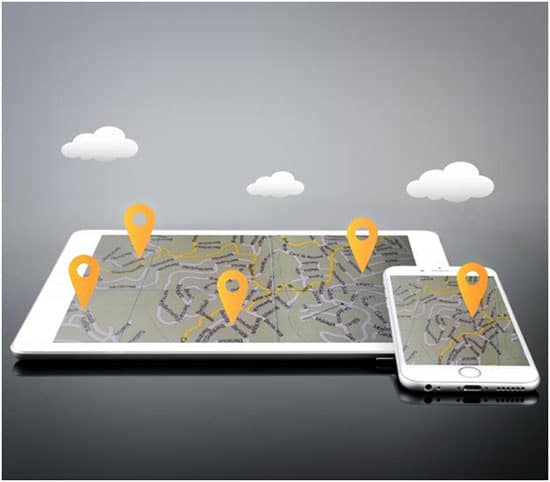
Hidden GPS
Individuals with Alzheimer’s disease are often prone to wandering and sometimes getting lost. Caregivers need a way to track them down. Smartphones have GPS, which could be used to track someone, but many elderly individuals don’t carry them. There are several types of monitoring jewelry available, but some individuals dislike the idea and refuse to wear it. GPS SmartSoles are a possible alternative in these cases – they’re expensive, at more than $300, and they need to be recharged, but the tracking device is safely hidden inside a shoe insert.
AARP Rx
One challenge for caregivers is just the amount of information they have to keep track of and sometimes communicate to other family members. With the AARP Rx app, you can organize lists of prescriptions, contacts, and more. The app also makes it easy to share these lists with others, and it can be accessed from almost any device – computer, tablet, or smartphone. The app also allows you to input medication info almost automatically by simple taking a photo of the bottle. It’s also possible to set different levels of access for different app users, if family members would like to maintain varying levels of privacy.
Blip BP
A single blood pressure check performed in a doctor’s office isn’t always accurate due to the potential for “white coat hypertension” to increase numbers. It’s more accurate to take multiple readings at home, but this can be an irritating process. There are smartphone apps that will allow caregivers to record numbers and send them to doctors, but the apps are sometimes fiddly and aren’t as simple as some people might like. Blip BP by BlipCare makes the process much easier. It’s the first FDA-approved wireless blood pressure monitor. All you need to do is connect the Blip BP to your home’s Wi-Fi, and it will take care of automatically uploading the data, which can be viewed on the accompanying app or online.
Medical Alert Devices
If you’ve watched much cable television, you’ve probably seen these in advertisements. These are simple, easy-to-use, often wearable devices that allow users to call for help when they need it. Philips Lifeline is one of the most well-known devices of this kind. One option, which includes a fall alert wearable pendant, doesn’t even require a button push – instead, it uses an accelerometer and other technology to automatically detect a fall and call for help.
Safe in Home
Safe in Home is one of several new systems that use motion sensors to monitor an elderly individual’s movements if he or she lives alone. If they become inactive at an unusual time, the system will notify family members. You can also use an app (or the website) to check routine activity levels to find out things like whether or not your elderly father is awake and moving at his usual time. This system also allows you to check the indoor temperature, and it’s very easy to use since the person being monitored doesn’t have to wear anything.
Floor Mat Alarm
This device doesn’t really roll off the tongue – the FallGuard Safety Auto Reset Monitor with Floor Mat – but that’s one of the only issues. The device is produced by the Smart Caregiver Corporation, and helps prevent wandering. All you have to do is place the mat by your elderly family member’s bed, or by a doorway. As soon as it is stepped on, an alarm will sound, alerting you to your family member’s movement so that you can help them or keep them from wandering off, as needed.
Featured Image Credit: Nicole De Khors / Burst
In Post Image credit: Jack-Moreh / FREERANGE
